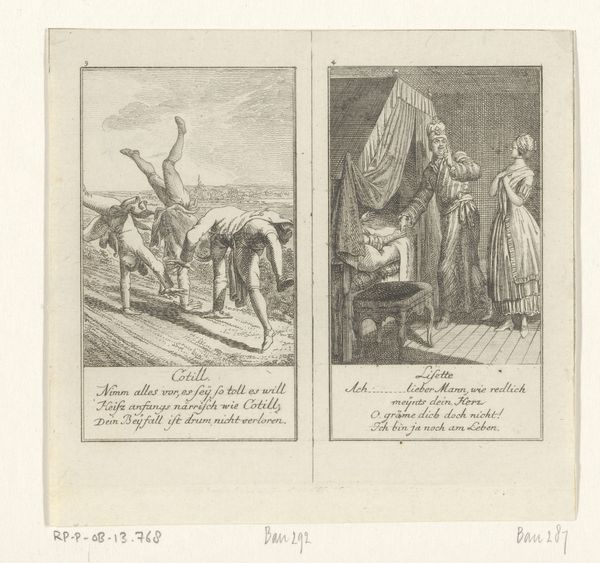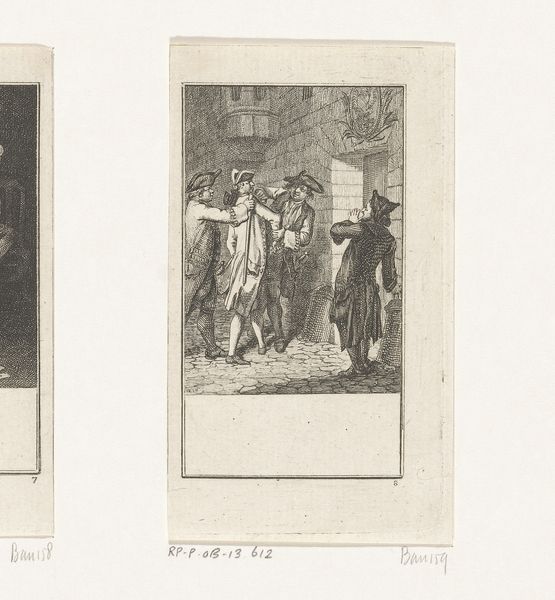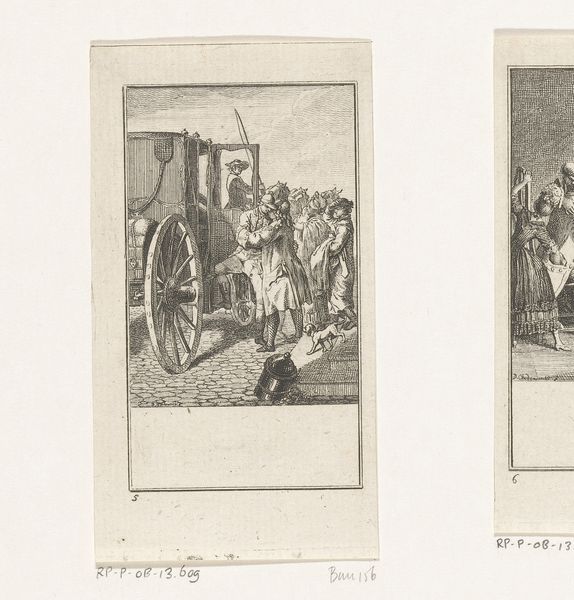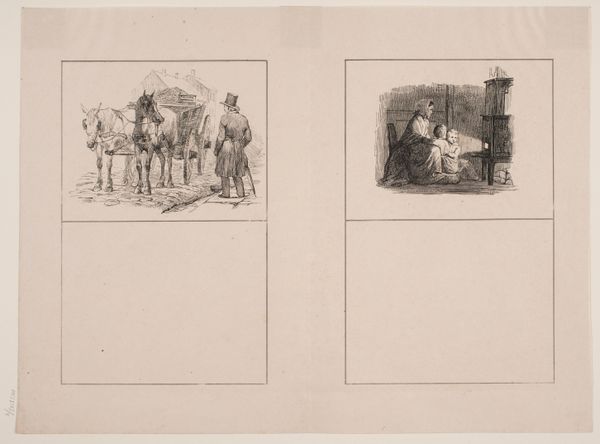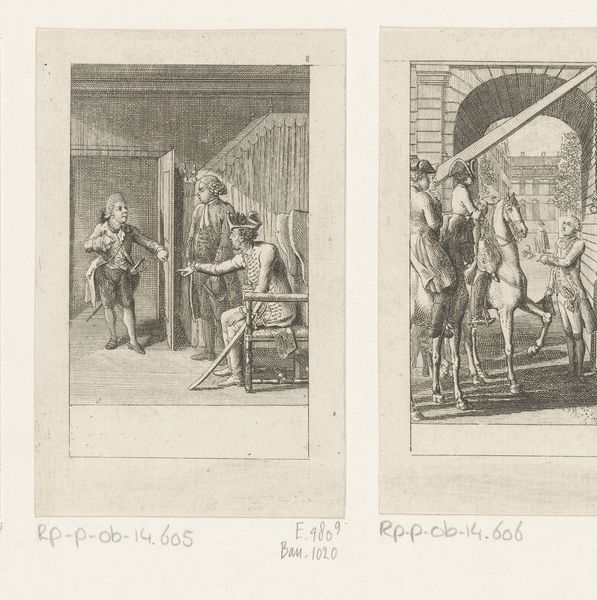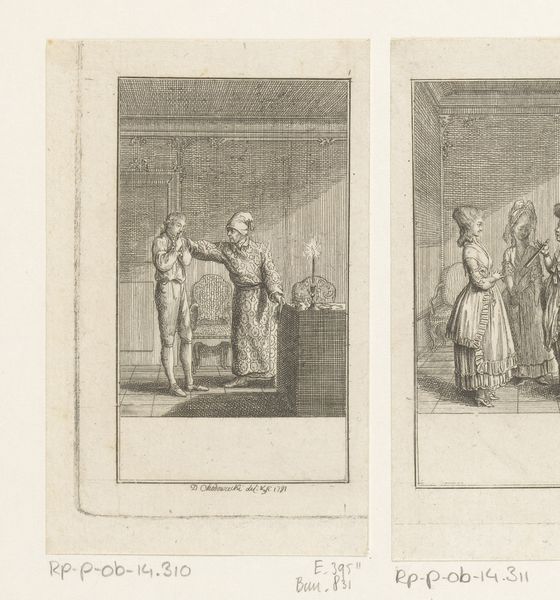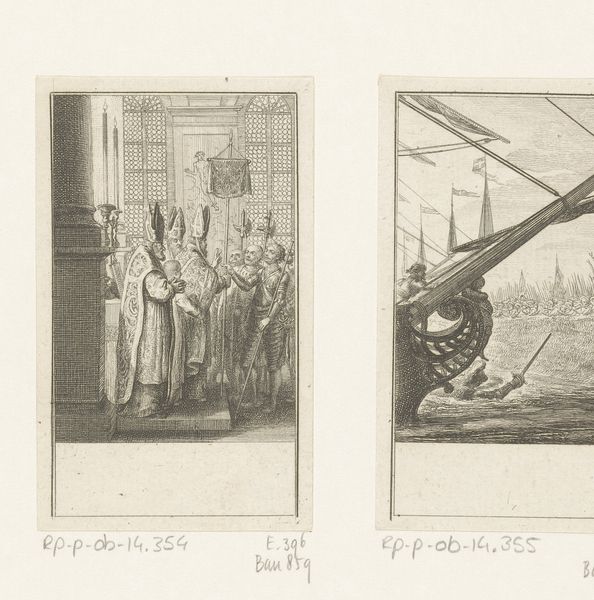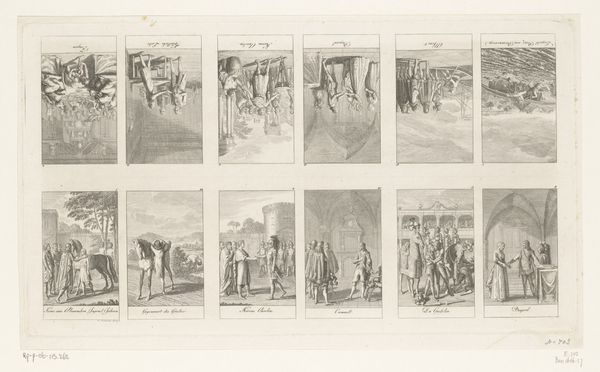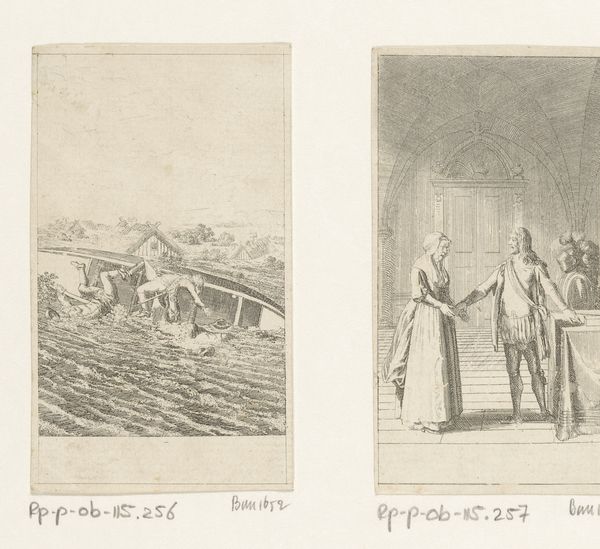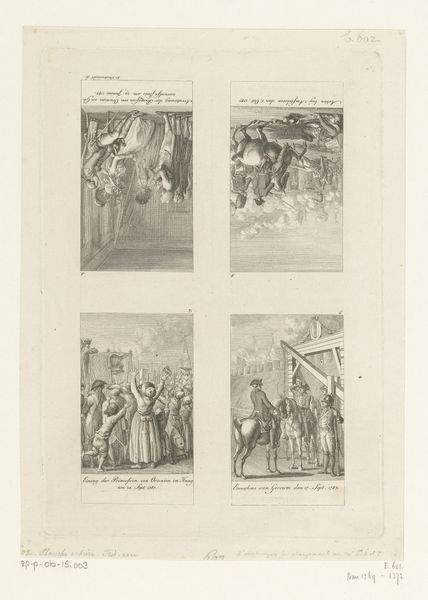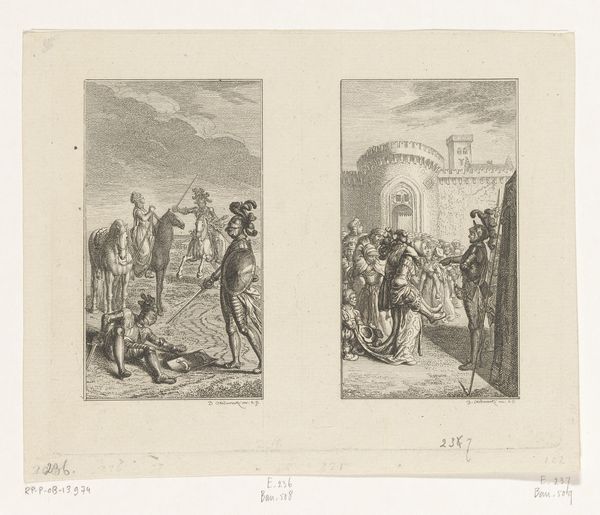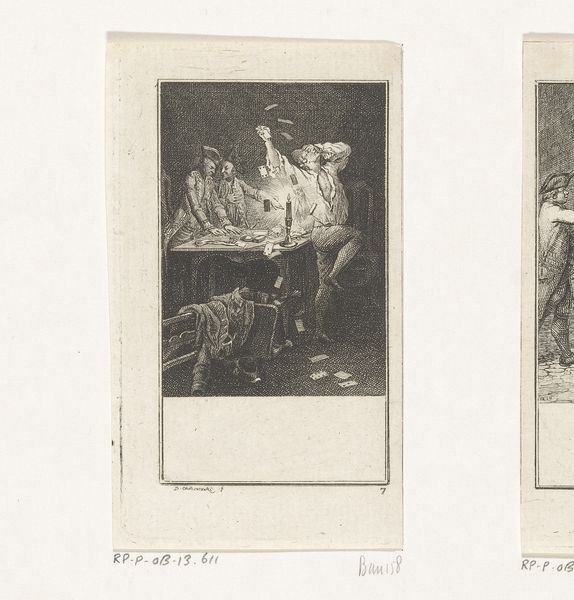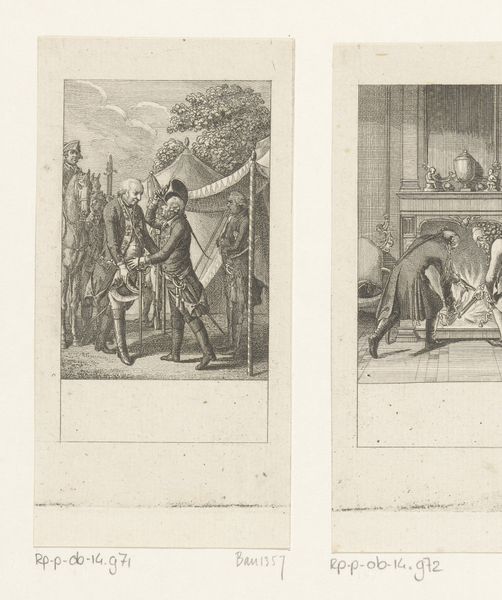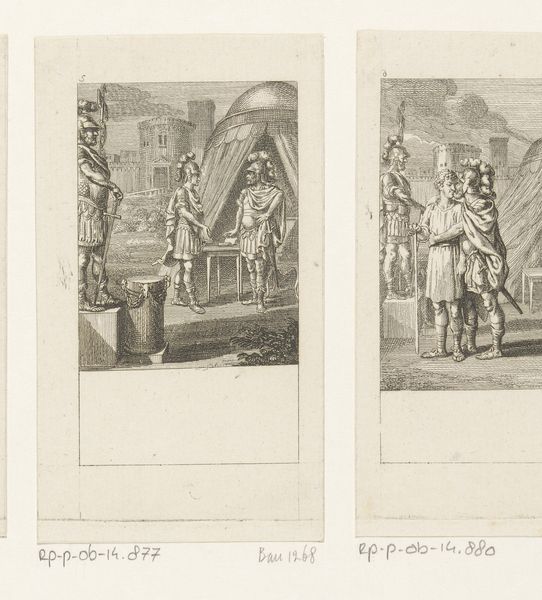
Dimensions: height 114 mm, width 357 mm
Copyright: Rijks Museum: Open Domain
Curator: Daniel Chodowiecki’s “Zes scènes uit Gellert's Fabelen,” from 1776, rendered in etching and engraving…it’s quite fascinating, isn’t it? What strikes you initially about these sequential scenes? Editor: They almost feel like panels from a comic book, each telling a little story. They remind me a little bit of Hogarth, maybe? What do you see in them? Curator: Absolutely, the sequential narrative is key. Consider Gellert’s fables – they were incredibly popular moral tales during the Enlightenment. Chodowiecki, deeply influenced by Enlightenment ideals, used his art as a powerful form of social commentary. How might the domestic settings and interactions depicted reflect broader societal norms and power dynamics of the time? Editor: Well, from what I can see, most scenes depict rich people or aristocrats, I would say… It looks as if he is reflecting their lives and customs? I am not sure if he is being judgemental or not… Curator: Precisely. Look closely at the details. How are women portrayed? What about the dynamics between different social classes within each scene? This wasn’t mere illustration; Chodowiecki was actively engaging with debates around morality, class, and gender roles. Think about the rise of the middle class, the emphasis on reason and virtue... Could these seemingly simple scenes be subtly critiquing aristocratic excess or promoting a more bourgeois ideal? Editor: That’s really interesting! I hadn’t thought about it that way. So, it's not just about illustrating a story, it's about making a point about society itself? Curator: Exactly. And his choice of etching and engraving – reproducible mediums – allowed his message to reach a wide audience, contributing to the broader cultural discourse. Now, given our contemporary understanding of gender and social justice, how do you think these fables resonate today? Editor: It makes me wonder about how far we've really come. Thank you! I am so glad I learned that details are never just details! Curator: Indeed, art is so often a reflection, or a refutation, of its time, which echoes into our own. It was my pleasure.
Comments
No comments
Be the first to comment and join the conversation on the ultimate creative platform.
